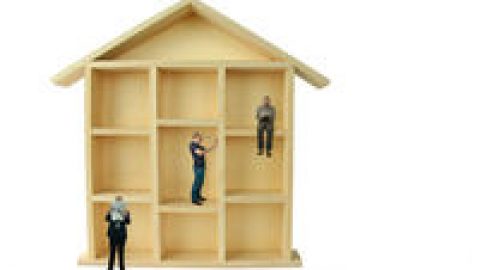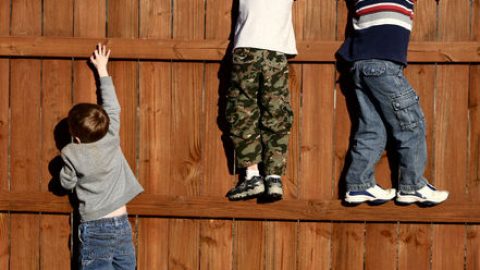Self-esteem (SE) is not just for kids, but something ongoing and every living person needs in order to survive and thrive. Imagine every single developing child as a sponge that can soak in feeling good about themselves in thousand different ways. This universal concept is so basic that it almost sounds cheesy. However, when feeling inadequate, the concept of how to build one’s own SE or identity becomes quite elusive. So, it is about time for me to concretely summarize some fine ways to build self-esteem.
At the outset though, let me get some things out of the way if you are a parent. As ambitious and driven people, we may be preoccupied with our careers. As a parent, I felt I consciously needed to leave the ego boosting noise of my own achievements (as important as it is for me to respect that for myself) from work at the door and enter as Mom each day. I think our children deserve space that is not trumped by our own halos. It is their turn to shine. While we are role models and all that stuff, it is good in small potions, but it is not about us! It is their future, their success! So, give them the dance floor.
Second, in the zeal to protect our kids, we often think of straight lines or paths of achievement as default. We tend not to like self-chosen activities of our children that may look “crazy” or “not trodden path” to us. I do not want to give examples in case I offend someone in my opinions. But, know that there are many roads to Rome. Lets foster them to “believe!”
These are things for our youth, or yourself as an adult, to note:
- Most importantly, recognize that SE is not one big island. Various strengths are like a group of islands. It is not all- or- none concept. SE in one area may help you cope with deficiencies and give strength to get over the barrier in the other areas.
- Think of role models you adore and analyze their methods. Usher in those qualities in yourself.
- Skill building is critical in the areas you want to improve. Strategize how to learn specific skills. Time is cash. Use it well.
3.a. Shaping– If you are parent, you can help teach your child to systematically learn.
3.b. Chaining- Step by step process of breaking down the task to accomplish the goal. If tired, take a power nap for 20 minutes or go play for a bit. It is ok. You need to have fun.
- Recognize biologically endowed strengths and foster them towards excellence. Success breeds success. Talk to trusted people as you discover. As Lin-Manuel Miranda said in ’60 min’ ABC show today on Hamilton play and his success, get in the lane as early as you can and start being the best at it to excel.
- Identify weaknesses and if they need to be honed further in order to make it in life, find a way to build skills slowly in mini steps. Again, design a strategic plan. Find your strengths and abilities to work through problems. Avoid walls that hit you in the face.
- Begin by defining yourself in various roles: What are your strengths as a person, student, brother/sister, son/daughter, friend and a community member. This helps to build a personal view of yourself. Write your narrative.
- Ask a trusted adult (if you are the parent reading, help your child to identify) what are the blind spots in your daily operations. Build a strategic plan to address the personal failings. Sometimes, you know what they are, if you stop being defensive and hear others’ feedback
- Help others. This will help internalize goodness. How and where are you involved in helping the community and making the world a better place. This will help others appreciate you. You will begin to feel complete and content with what you have.
- Try and look at two sides to any argument and expand your mind in thinking rationally with a logical mind. Being tolerant of others opinions and values is important.
- Moral decision-making is central to SE. Not succumbing to peer pressure and being able to say “no” comes from being given the independence to make decisions with your guidance from an early age. Start early. That said, peer influence is huge in our children’s lives. I think immersing them in the right environment is critical. So check along the way to eliminate potential dark friendships (Negative influences: Interaction with gang bangers and hard-core drug sellers/users).
- You need good friends who love you. Not just cool friends you want to be seen with, but those that genuinely love you. Those that will have your back. Connect.
Making children feel safe and protected: The right environment
The reason I write these is this: Time and again, people write biographies of their life (I read about one this weekend in WSJ) where they say they were miserable because of their parents. Children can even misinterpret parents’ good intentions or may be blind to the circumstances that their parents faced as a child that shaped them. Let’s break that inter-generational misery (if indeed it is an issue). Remind yourself of this checklist to rise above your constraints….
Do
- Genuine praise: “I like the way you talked to Sam yesterday.” “What a great essay you wrote.” “Oh, My, you looked beautiful in that dress.” They develop confidence this way.
- Generous love: “I love you, Son.” “I am proud of you, baby.” They feel they are safe and can control the environment.
- Give choices and freedom with respect: “I like to drop you at your friend’s place, love. But if you choose to bike that far, it is fine too. I know that you will wear helmet. Yes?” Budgeting and discussions on household expenses is another example of respecting them and involving them. They learn competence through this gift.
- Empathic listening: Just give attention, soak up what child has to say. No need to give solutions every single time. Give them space. Expand, invite questions, highlight, discuss, and find out more with interest through where, what, when, how, and why. They learn to connect through your gift of listening!
- Give time: It all takes time when they need it, not when it fits your schedule.
- Tell your stories: Especially those where you failed and rebuilt. Let them see your weaknesses. They learn to cope through sharing and learning.
I tagged my examples with cool underscored words from Dr. Ginsberg (2011) that help build resilience in children.
Don’t:
- Think of the big picture of why they may be shouting or arguing. Do not focus on just what your child mouths off, even if it is F word. Sometimes it is not how smart or rational you are, but the real logic is in responding with wisdom by grasping the struggle your child is going through. Do not ridicule or be punitive, but rise above. Understand with compassion and they will become amenable to making amends and get a chance to build themselves. Earn their trust first, through all the ‘do’ list! Then, taking feedback is a bit less painful for them.
- Love is a natural thing that a child feels towards parents. Don’t demand it, but earn it. This is important where divided loyalty is a prime issue in case of divorce.
- Don’t be so critical. Once my wise husband said– “we don’t kick the cat too much” -sort of the cat that is already beaten and driven to huddle in a corner- a vision which instantly transformed me into a compassionate mode. Our kids need us to let go at times.
- Don’t fight back, but bend as parent. Like in martial arts, bend, stay balanced and let them topple and they will listen to your point. Bend and yield. Balance, flexibility, grace and softness from ‘The parent’s Tao Te Ching’ (by William Martin, a favorite book of mine) will serve us so well instead of tension and anger.
For all of you out there: I wish for you to live each moment minding your conversations, doing the right thing and living serenely.















